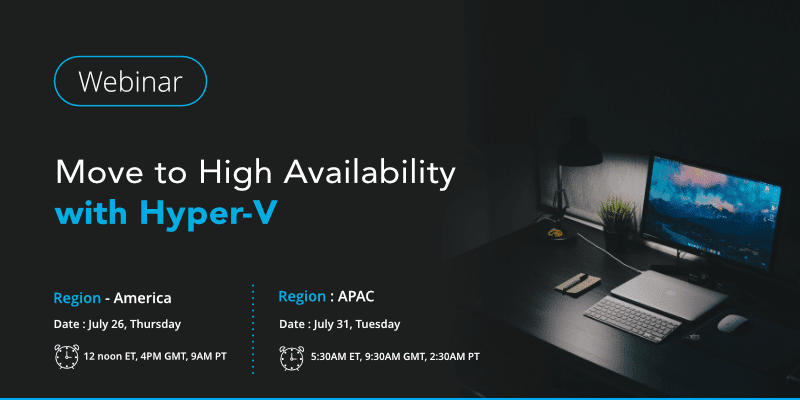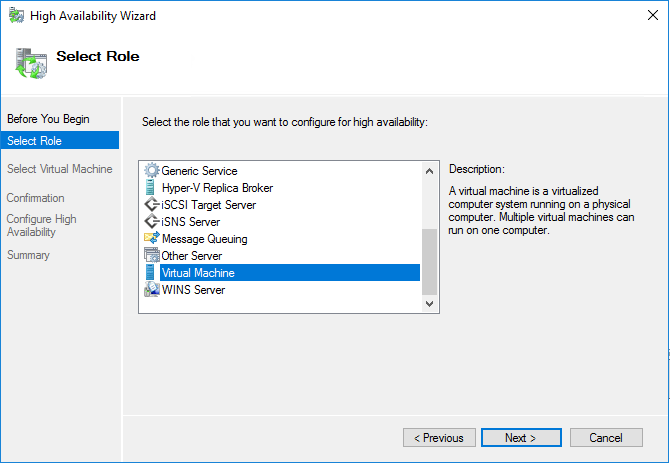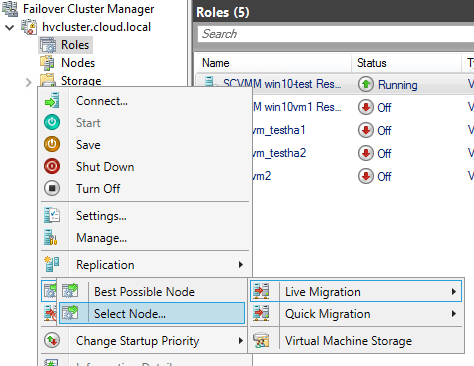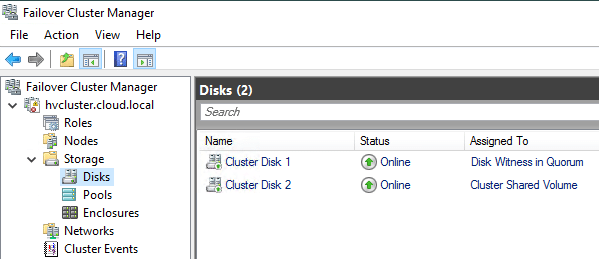Hyper-V Cluster High Availability Features Design and Backups

One of the key benefits of modern virtual environments powered by today’s hypervisors is high availability. Virtualization has allowed for a powerful abstraction from the underlying physical hardware that allows production workloads to be mobile. This opens up powerful advantages over running server workloads on physical baremetal. Microsoft’s Hyper-V hypervisor provides a powerful platform for running today’s production workloads in enterprise datacenters. There are many mechanisms built into Hyper-V that allows organizations to have the tools needed to ensure high availability for virtual machines running in a Hyper-V environment. What exactly is high availability? What high availability features are included with Microsoft’s Hyper-V hypervisor? How can third party tools bolster high availability with Hyper-V providing backups? Let’s take a look at Hyper-V cluster high availability features design and backups to take a look at high availability features in Hyper-V and how these can be utilized.
What is High Availability?
High Availability or HA as it is often abbreviated is the mechanisms and features that allow organizations to ensure up-time of applications, services, virtual machines, and ultimately data. Events that can disrupt the up-time of these key areas include hardware failure, network failure or other outages based on load or application failure. High Availability is often confused with “disaster recovery”. While it is a part of the overall business continuity plan for organizations, it is not a disaster recovery mechanism, but rather a means to ensure business operations meet with the desired SLAs put in place and can withstand disruptions to infrastructure without losing availability to applications or data essential to business operations.
Hyper-V High Availability Features and Design
As mentioned in the outset, Microsoft’s Hyper-V hypervisor has many built in features that enable organizations to ensure high availability for Hyper-V virtual machines. Let’s take a closer look at the following Hyper-V High Availability features and how they bolster HA in a Hyper-V environment.
- Windows Failover Clustering
- Live Migration
- Cluster Shared Volumes (CSV)
- Guest Clustering
The above list of built in features and architecture available with Microsoft Hyper-V provides powerful high availability mechanisms that Hyper-V administrators can use to design highly available production systems.
Windows Failover Clustering with Hyper-V
A Hyper-V cluster is essentially a role that is installed on the cluster nodes in a Windows Failover Cluster that enables the Hyper-V Role itself to be highly available. This also allows you to create high availability virtual machines using the Failover Cluster Manager or System Center Virtual Machine Manager. With Windows Failover Clustering, a heartbeat mechanism is used to check to see if cluster nodes are offline. In a failed cluster node scenario, virtual machines that were running on the failed host, are restarted on a healthy host left in the Windows Failover Cluster.
By using highly available network and storage design that is common to Windows Failover Clusters, Hyper-V administrators have a highly available set of cluster nodes that are able to house virtual machines, even if a node fails due to hardware or other reasons.

Hyper-V Live Migration
One of the core features that makes highly available virtual machines possible with Hyper-V environments is Live Migration. Live Migration is akin to VMware’s vMotion that allows seamlessly moving virtual machines while they are running across cluster nodes. This functionality is an integral part of highly available virtual machines as it allows them to be mobile without any downtime. This allows Hyper-V administrators to have proactive or planned downtime since virtual machines can be Live Migrated to take a host down.

Hyper-V Cluster Shared Volumes (CSVs)
One of the Hyper-V features that allows high availability in the Hyper-V cluster is the Cluster Shared Volumes storage. With Windows 2008 R2, cluster shared volumes were introduced. CSVs allow all the Hyper-V hosts in a Windows Failover Cluster to access the same storage. Prior to that release, Hyper-V hosts had to have multiple disks provisioned since only one host could access the storage at a time. This greatly complicated migrations.

Cluster Shared Volumes also provide resiliency benefits when compared to other forms of storage in a Hyper-V cluster since multiple connections are made between nodes in the cluster and the CSV volume. This provides path redundancy. If one path goes down, the communication with a CSV volume can still traverse an alternate path. CSVs can be formatted with either the traditional NTFS or the new ReFS file system.
Hyper-V Guest Clustering
You may not readily think about the concept of creating a “cluster inside a Hyper-V cluster” but this is exactly what you can do to bolster high availability of not only virtual machines but also applications. The underlying physical Windows Failover Cluster hosting the Hyper-V role provides high availability to the virtual machine and then as mentioned the guest cluster makes your application or service highly available.
When you think about it, even if your virtual machine is highly available due to the HA mechanisms in place by Hyper-V on top of a Windows Failover Cluster, if a host the virtual machine lives on fails, the virtual machine will still go down and become inaccessible for a short time. It will be restarted on a healthy Hyper-V host, however, downtime is still experienced. However, when you have two or more clustered virtual machines inside your physical Windows Failover Cluster hosting Hyper-V, if one of your VMs goes down, you still can access your application as the clustered application, such as SQL Server, fails over to the other node in the application cluster. This bolsters high availability to business-critical application as it prevents any downtime. Some points to remember:
- Not all applications support guest clustering or clustering at all
- Licensing will generally be more expensive with guest clustering as you have to purchase more software licenses
- It requires more resources from your Hyper-V environment since more VMs are running
Hyper-V Cluster High Availability and Backups
Despite all the high availability mechanisms that can be put in place, including the ones we have covered above, there is still the need to provide data protection. High availability protects you from hardware, network, or application failure, but it does not protect you from accidental or intentional data loss that can happen. You still need to protect your data.
Hyper-V clusters provide some interesting challenges for data protection solutions that must be able to interact with and protect your Hyper-V virtual machine data efficiently, effectively, and in a way that is consistent. Vembu BDR Suite is a tremendously good data protection solution that we have covered in various blog posts. Vembu is set to announce really exciting functionality that will be unveiled in an upcoming webinar scheduled as relates to Hyper-V High Availability and Hyper-V Clusters. Be sure not to miss it!
- Date – Tuesday, July 31
- Time – 12 noon ET, 4PM GMT, 9AM PT
- Sign up for the webinar here!

Takeaways
Organizations running Microsoft Hyper-V have many high availability mechanisms available that allow keeping production virtual machine workloads running despite hardware, network, or other failure. By using the various high availability features found in Hyper-V, administrators can ensure virtual machines can easily be made available on any host in the Hyper-V cluster. Take that a step further, guest clustering allows high availability at the application level! Despite the high availability features found in Hyper-V, organizations still need to protect their data and this means proper backups of Hyper-V virtual machines. What about protecting virtual machines in a Hyper-V cluster? Data protection solutions need to be able to interact with and properly support backups in a Hyper-V cluster environment. Be sure to sign up for the Vembu webinar discussing exciting new features coming in the next Vembu BDR Suite release!













